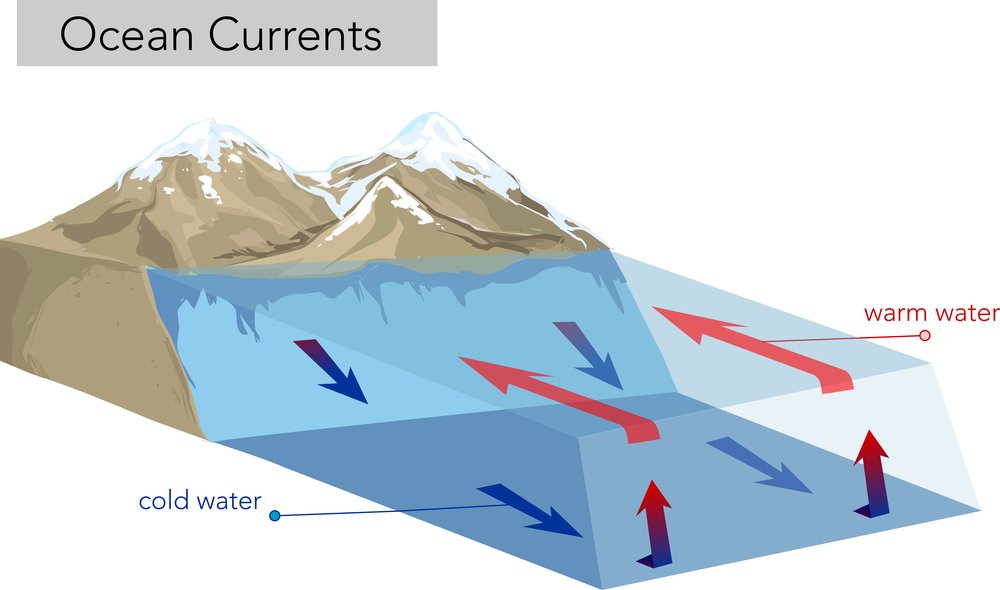How Do Ocean Currents Work?
On a stormy January night in 1992, a cargo ship sailing through the Pacific ocean lost six huge containers full of 29,000 plastic bath toys: yellow ducks, blue turtles, and green frogs. As a result, these durable plastic bath toys have been floating around the world for 24 years, passing the location where the Titanic sank, landing in British Columbia, Japan, Alaska, Maine, Hawaii, and even spending years frozen in an Arctic ice pack. How did they reach so far?
Thanks to all the ocean currents! Earth’s oceans are connected by a big global invisible belt of moving water. There are surface currents and deep ocean currents.
Ocean currents are driven by many different factors: the wind, gravity, tides, changes in water density due to different temperatures and salt particles, the rotation of the Earth, and events such as earthquakes. The relief of the ocean bottom and the shorelines also impact and modify the behavior of the currents, causing them to speed up, slow down, or even change direction.
In this experiment, we will explore how temperature can affect water density and create water currents. You will need:
Water
Two different food colors (preferably contrasting - one bright and one darker)
Clear, white, or transparent bowl or a deep baking dish
Fill about ⅓ of your vessel of choice with cold water. Add a few drops of one of your brighter food colorings.
As the goal is to have very cold water so that you can clearly see the behavior of the ocean currents, the next step is to add 2 cups of ice to the cold water and stir. Let it sit for a few minutes for some of the ice to melt. Lukewarm water will not give you the same results. (Trust us on that!)
Boil 4 cups of water while the ice is melting. Add darker food coloring to the boiled water.
Once both sets of colored water are prepared, carefully pour some of the boiling water into one of the corners of your vessel filled with cold water.
And ta-dah! Currents will start forming right before your eyes!
What is happening? As the temperature changes the density of a fluid, the hot water will push through the cold water, creating currents that you can witness thanks to the different colors. In the ocean, the warmer waters are acting like faster-moving strips of water, like the well-known Gulf Stream, which passes by Kvaroy island!
Originating at the tip of Florida, the Gulf Stream is a warm and swift Atlantic Ocean current that follows the eastern coastline of the US and Canada before crossing the Atlantic Ocean towards Western Europe. It influences the climate of Norway, the UK, and France, making the weather there much warmer than it would otherwise be.
Check out more interesting resources on ocean currents provided by Ted-Ed, Be Smart, Nanogirl - STEM activities for kids, and Ocean First Institute.


